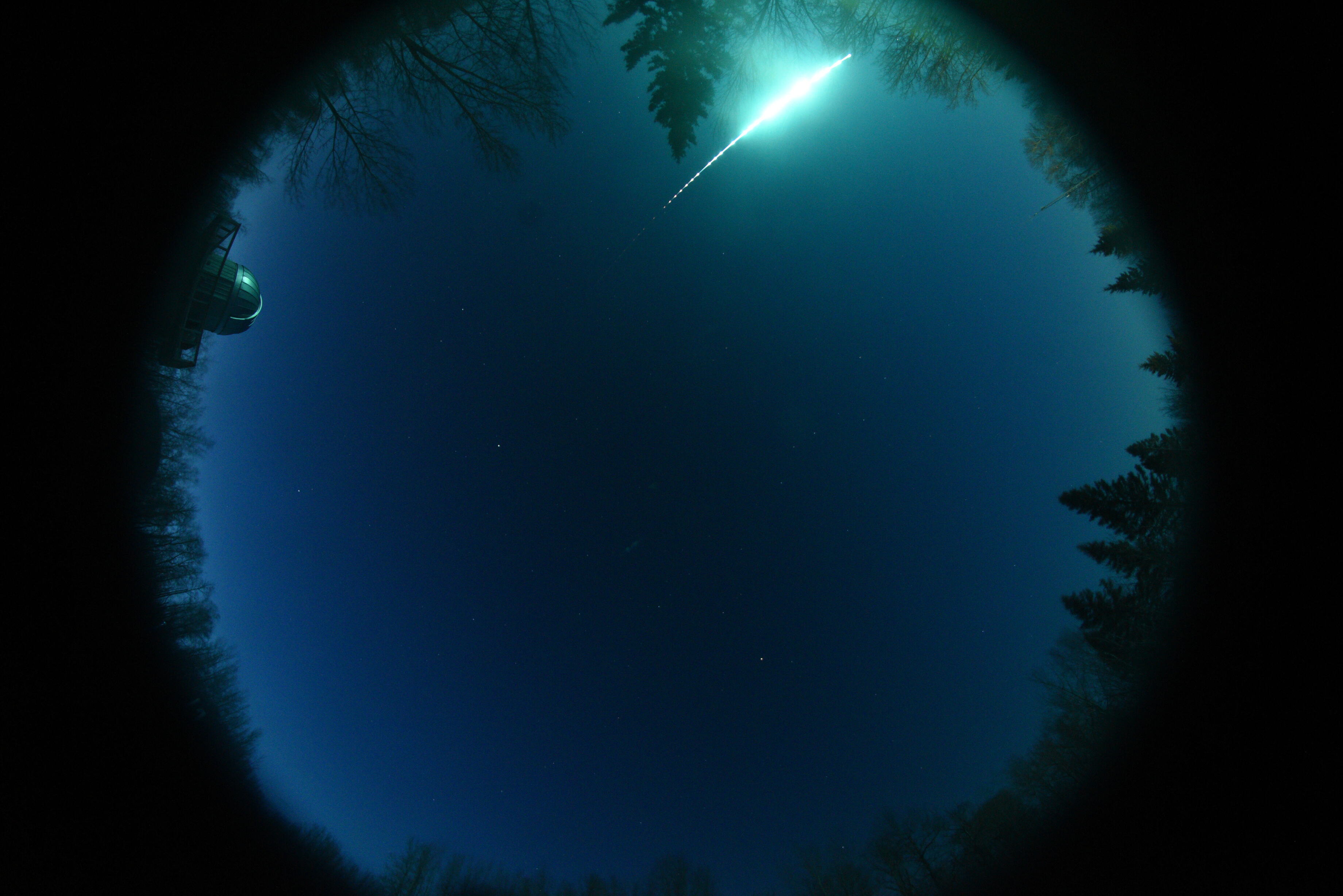Canadian GFO partners inspect unusual cometary object.
Patrick Hill and Chris Herd (University of Alberta), who lead the MORP 2.0 programme, have been very busy with interviews. Hadrien Devillepoix (Curtin University) calculated a trajectory and orbit based on records from the Miquelon Lake and Vermilion cameras. The initial assessment shows that the object did not survive entry, so it is unlikely that meteorites will be found. Before crashing into the Earth’s atmosphere at 62 km/s, the meteoroid came from an orbit that is typical of long-period comets (very far away and highly inclined from the plane of the planets).
As often the case when several hundreds of people share their visual observations on the IMO website, the crowd-sourced trajectory is remarkably close to the one reconstructed from instrumental records.
Leader of the Southern Ontario Meteor Network, Peter Brown (Western University) spotted the fireball from the Geostationary Lightning Mapper instruments on-board the GOES-16 and GOES-17 weather satellites (see Twitter below).
Update 2021-03-03: Members of the GFO from the University of Alberta, Western University in Ontario, Curtin University in Western Australia, and NASA’s Meteoroid Environment Office in the USA, are now investigating the unusual object to see what it can tell us about one of the most remote places in our Solar System.

